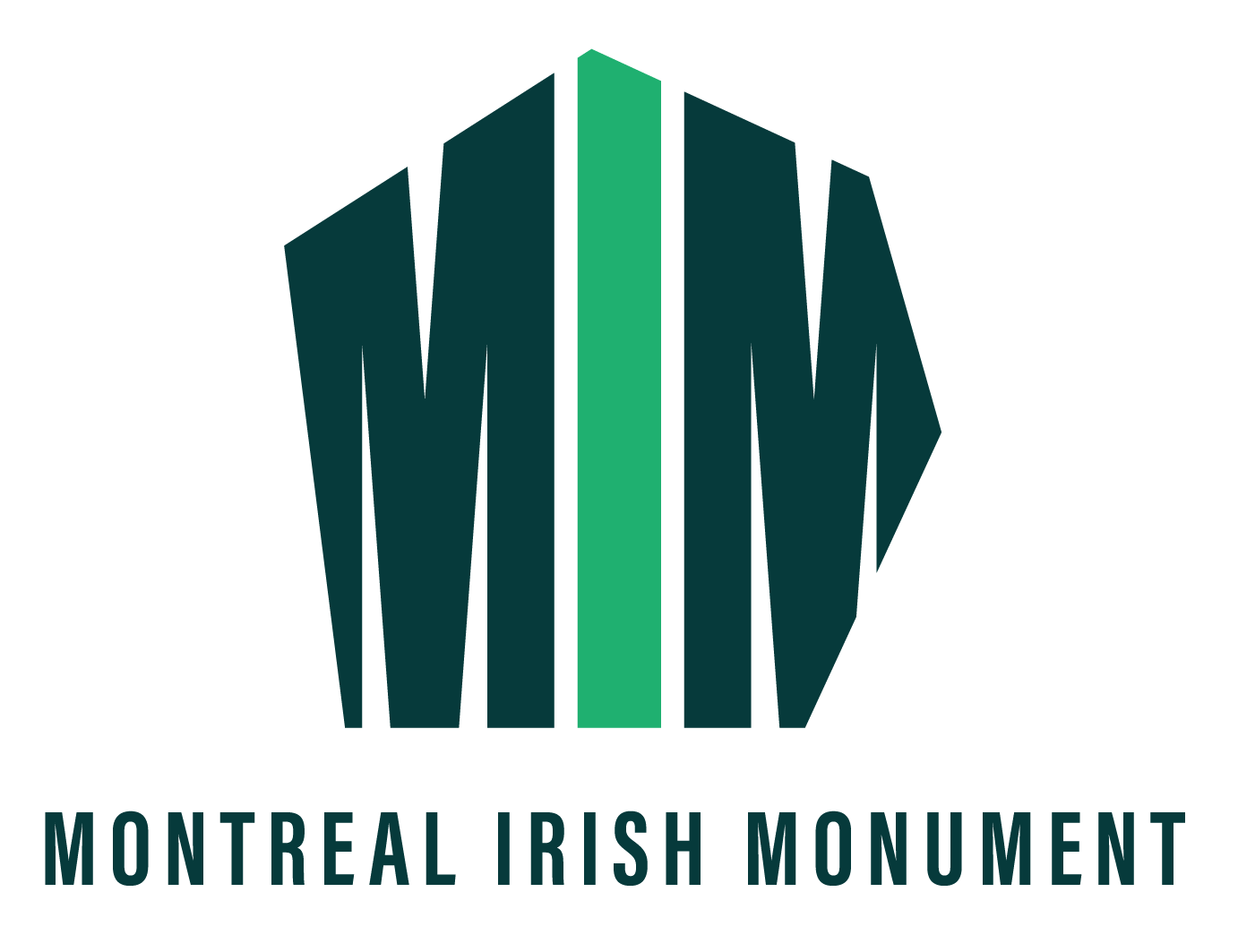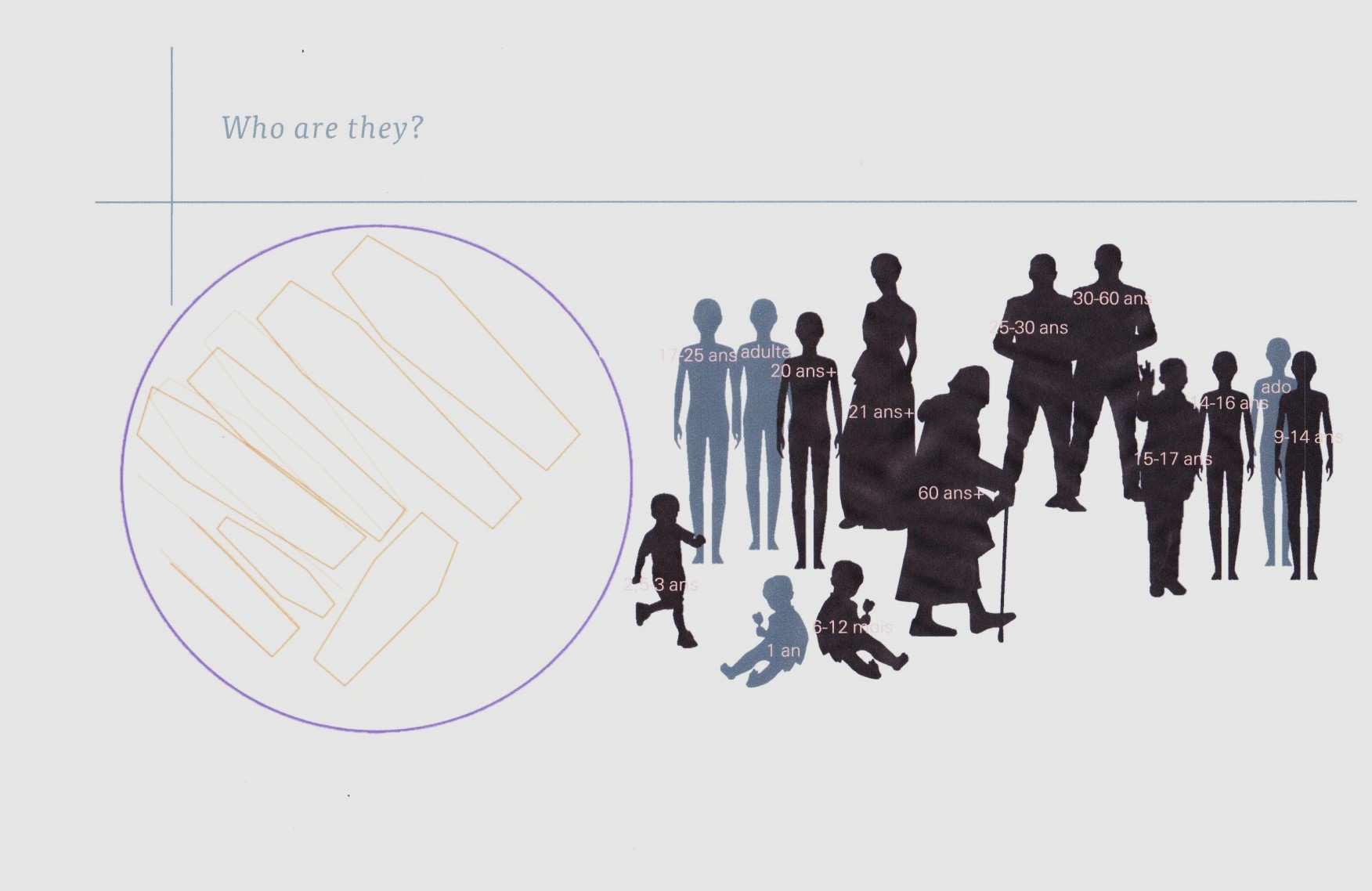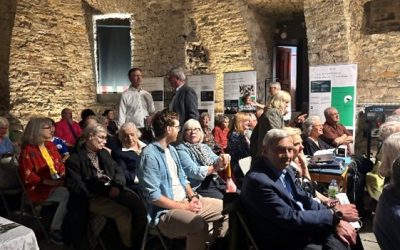Remains of 14 individual victims of Black 47
REM Archaeologists at the site
In November 2019, a team of archaeologists embarked on an excavation at the Black Rock cemetery site. Their mission was prompted by the need to install a REM (Réseau express métropolitain) pillar, which was suspected to intersect with the cemetery grounds. Demonstrating a commitment to responsible development, the company collaborated with the Irish Montreal community to finance the dig and ensure respectful handling of any human remains discovered.
This endeavor marked the first official archaeological effort at the site. Lead archaeologist Martin Perron emphasized the historical significance, noting that prior to this excavation, the only analyzed human remains of Irish migrants in Quebec were those of eighteen individuals found at Cap-des-Rosiers, identified as castaways from the Carricks shipwreck.
The inscription on the Black Rock Monument estimated that 6000 Irish refugees were buried in the cemetery, yet the identities and stories of those interred remained largely veiled in mystery until now.
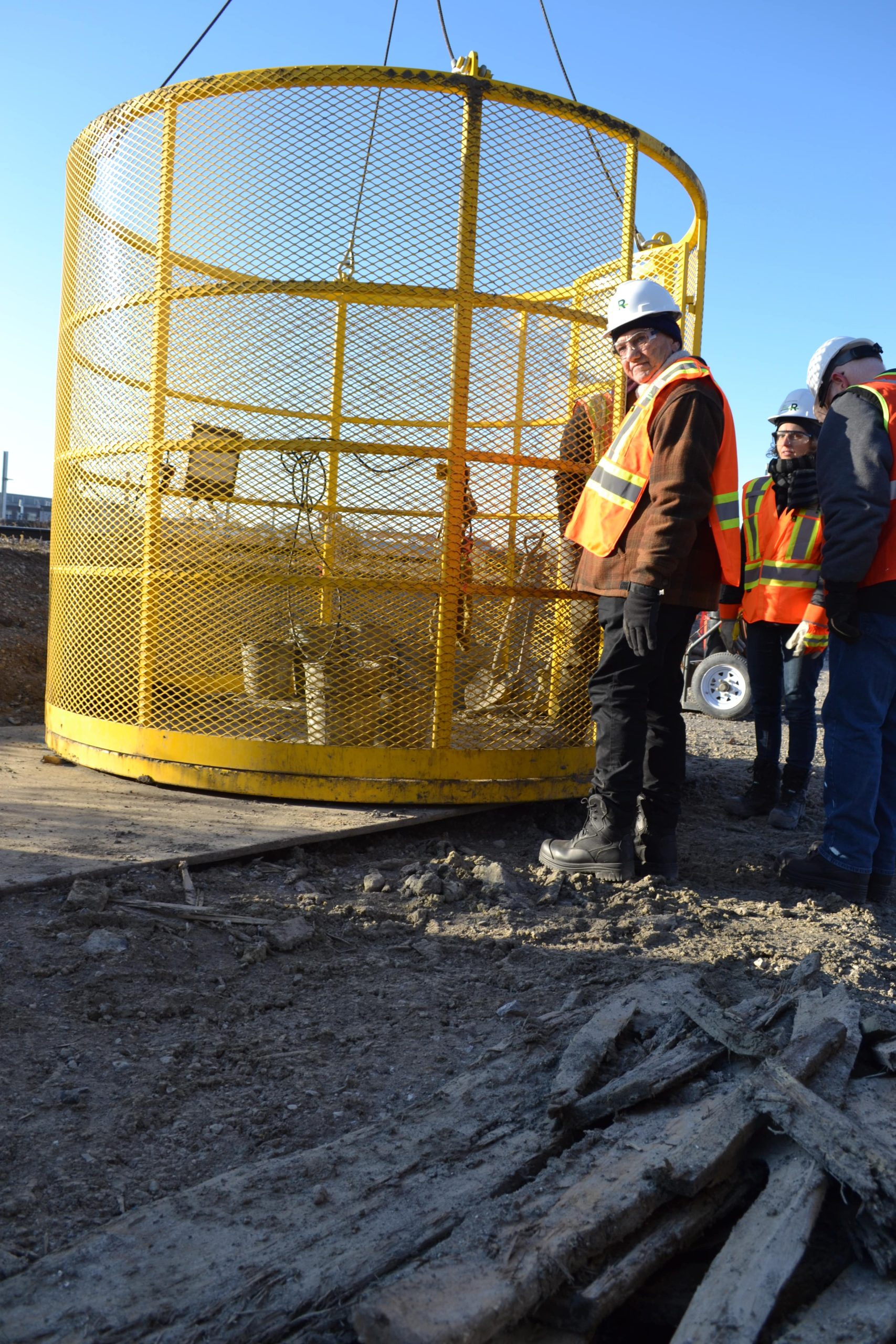
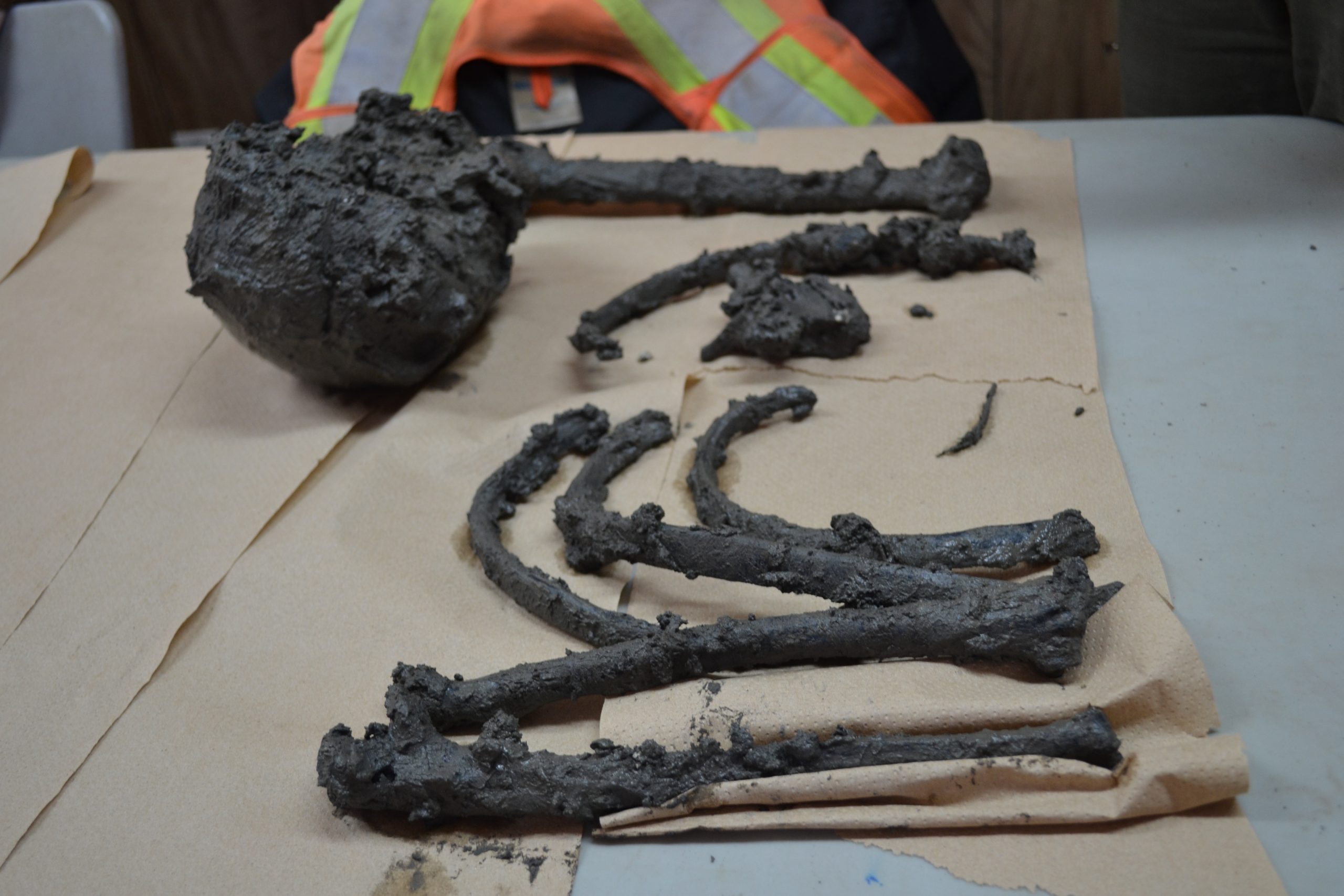
Through meticulous excavation of a cylindrical hole measuring 7m2, the team unearthed the remains of 14 individuals laid to rest in white pine coffins. Among them were seven adults, including two men and two women, three teenagers, and four children.
For further insights into these compelling individuals, including details about childhood diet and prevalent ailments read the complete report here. Particularly poignant are the stories of a 12-24 month old infant and a young boy who relied on a crutch. It’s poignant to reflect on the arduous journeys these individuals endured—from their homes to the coffin ships, mostly on foot, surviving months of hardship aboard overcrowded and disease-ridden vessels, only to succumb to illness on foreign shores.
Yet, it is in honoring the memory of these refugees that the foundation endeavors to ensure this site, their final resting place, receives the dignified commemoration it deserves.
meet the victims of Black 47
Who are they?
Archaeology brings their stories to life after more than 170 years
Individual 5A11
15-17 year old male
Despite being in good overall condition, the skeleton displayed several health issues. Evidence of childhood stress was observed in healed marks on the left eye socket. They had a healed rib fracture from their younger years, likely caused by a direct impact. Fortunately, their shoulder bones protected them from serious harm. At the time of death, they had a bacterial infection in their right hip, causing weakness and muscle wasting in their right leg. Additionally, they suffered from joint problems, unrelated to the infection, involving detached cartilage in their right shin and left foot bone due to intense activity.
Individual 5A16
25-30 year old male
A robust man aged 25-30, towering at approximately 1.80 meters. His bones showed signs of hard work, with extra growth where muscles attached. He had some damage in his wrist and arm bones, probably from a joint problem called osteochondritis dissecans. He also had mild arthritis in his spine, probably from his active lifestyle. A hypoplastic line on the upper left canine (see photo 15) indicates a stress episode that disrupted enamel development around 2.5 years old. This stress likely occurred around 1820-1825, a period during which Ireland was already experiencing focused episodes of famine.
Individual 5A15
12 – 24 month old
One of the youngest individuals unearthed. Their dental age is between 12 and 24 months. However, their bone age is highly discordant, as bone length suggests an age of 3 to 6 months. It’s clear this child had significant growth delay compared to their dental age. No bone lesions are visible, which isn’t surprising given the individual’s age. Few pathologies affect bones in such a short time. Malnutrition and typhus are likely among the first stresses the body faced and couldn’t withstand.
Individual 5A10
14 – 16 years old
The bone maturation suggests an age range of 14 to 16 years. Although the coxal bone elements are fused, the sex remains undetermined. They were likely around 1.64 to 1.67 meters tall. Their muscles, especially in the knees and shoulders, were well-developed and balanced. Also, there’s a sign on the leg bone that suggests they often squatted sideways.
Individual 5A12
9-14 years old
Despite their young age, they had tartar on their teeth. They also had a slight bone condition and signs of past eye socket issues. Their left arm was shorter and thinner than their right, suggesting a possible health problem, but there were no visible problems. They have one less rib pair than usual, but it doesn’t affect their life. Their spine has a small difference too, but it doesn’t cause any issues either.
Individual 5A14
60+ year old female
This woman was over 60 years old. She had mild arthritis in all her joints, with extra bone growths. A small part of her left elbow had its cartilage completely worn away, leaving the bone as the joint surface. The bottom part of her leg bones showed signs of squatting.
Individual 5A17
30-60 year old male
This man favored using his right arm, likely due to how his tendons were shaped over time. He had advanced joint damage in his right forearm and left foot, possibly from wear and tear. His teeth weren’t in great shape; there was tartar on them, and some were worn down to the dentin. He had lost some molars, and there was an infection where one used to be. There’s evidence he may have smoked a pipe, a common way to use tobacco from the 1600s to the early 1900s. This matches with the historical context of the Irish community, known for pipe smoking, found in the Griffintown archaeological sites.
Individual 5A7
2.5-5 years old
This burial, labeled as 5A7, was found positioned at the foot of the other burials and aligned from east to west. It belongs to a child estimated to be between 2.5 and 5 years old, determined by examining the development of their remaining teeth. The fusion state of certain bone parts and the length of the long bones match this estimated dental age. During a basic check of the bones, no health issues were spotted, except for some tartar on the upper right baby molar.
Individual 5A9
21+ year old female
Individual 5A4
20+ year old
Individual couldn’t have their sex determined due to an incomplete hip bone. Some features suggest a female shape, like a wide ischial notch and a long auricular groove, but these can sometimes occur in males too. The sacro-pelvic iliac surface indicates an age over 20, but we can’t be precise. There are slight arthritis signs on various joint surfaces, such as bony growths. They lost their lower right second molar before death, with the healing process started. Most teeth fell out after death, except two, which show moderate wear and tartar buildup. These issues usually happen in older individuals but can occur earlier depending on lifestyle. There’s also a smooth area on the right shin bone’s joint surface, likely from a posture involving a lot of ankle bending.
further information
Read the Complete Archaeological Report
“The exceptional nature of the intervention in the Irish cemetery is as much about the funeral organization and its historical context as it is about the carefully considered means and methods implemented for its excavation. The project brought together engineers, archaeologists, and other professionals, as well as members of the Irish community, to devise a strategy that was minimally invasive and maximized the chances of a successful archaeological excavation. The resources employed were extraordinary, given the uncertain outcome until the discovery of the first coffin boards. Would the drilling of the caisson proceed unhindered and without completely disturbing the graves? Would the challenging working conditions allow for a meticulous excavation to be carried out?”
Don’t Miss
Our News And Events
The effort to commemorate these individuals with a large memorial park continues.
Le Typhus and the Irish Famine: Memorial, Memory, and the Science of Remembrance
September 6th & 7th, 2025Le Typhus and the Irish FamineOn September 6, 2025, the Montreal Irish Monument hosted Le Typhus and the Irish Famine: Memorial, Memory, and the Science of Remembrance at the historic Notre-Dame-de-Bonsecours Chapel Vault. We extend our...
Thank You for Joining Us By: Kelley O’Rourke, Director, Montreal Irish Monument and President, CIMPN On September 6, 2025, the Montreal Irish Monument hosted Le Typhus and the Irish Famine: Memorial, Memory, and the Science of Remembrance at the historic Bonsecours...
MIMPF in LaPresse article
We are honoured to see the Montreal Irish...
Subscribe To Our Newsletter!
Sign up to our quartlery newsletter and get updates from the Montreal Irish Monument Foundation straight to your inbox
Contact
info@montrealirishmonument.com
Address
1195 Sherbrooke O. Montréal, QC H3A 1H9
